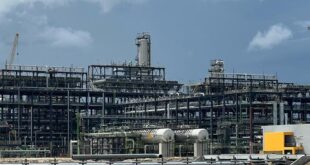The 2020 OPEC World Oil Outlook (WOO) which was launched on Monday in Vienna, Austria, has foretasted that the global oil sector will need cumulative investment of $12.6 trillion in the upstream, midstream and downstream through to 2045.
The highlights from this year’s WOO noted that the outbreak of the COVID-19 pandemic resulted in the sharpest downturn in energy and oil demand in living memory.
Despite the large drop in 2020, global primary energy demand is forecast to continue growing in the medium- and long-term, increasing by a significant 25% in the period to 2045.
All forms of energy will be needed to support the post-pandemic recovery and to address future energy needs.
Oil is expected to retain the largest share of the energy mix throughout the outlook period, accounting for a 27% share in 2045.
Natural gas will be the fastest-growing fossil fuel between 2019 and 2045 and, after oil, will remain the second-largest contributor to the energy mix in 2045 at 25%.
‘Other renewables’ – combining mainly solar, wind and geothermal energy – will grow by 6.6% p.a. on average, significantly faster than any other source of energy.
Assuming that the COVID-19 pandemic is largely contained by next year, oil demand is expected to partly recover in 2021 and healthy demand growth rates are foreseen over the medium-term horizon.
Globally, oil demand is projected to increase from nearly 100 mb/d in 2019 to around 109 mb/d in 2045.
In OECD countries, oil demand is expected to plateau at around 47 mb/d during the period 2022-2025 before starting a longer-term decline towards 35 mb/d by 2045.
In contrast, demand in non-OECD countries is projected to rise by 22.5 mb/d over the forecast period, from nearly 52 mb/d in 2019 to 74 mb/d in 2045.
India is expected to be the largest contributor to incremental demand, adding around 6.3 mb/d between 2019 and 2045.
Oil demand in road transportation will continue to dominate the sectoral breakdown, but the largest growth will come from petrochemicals.
Oil demand in the aviation sector was most affected by COVID-19 restrictions in relative terms, but is projected to partly recover in 2021 and will continue growing thereafter.
US tight oil is expected to recover quickly as market conditions improve, but is not likely to reach heights projected in previous Outlooks.
Looking further ahead, non-OPEC supply will decline again after US tight oil peaks around 2030 while OPEC liquids will fill the gap, rising by around 10 mb/d to 44 mb/d by 2045.
Traded volumes of oil are expected to grow only modestly in the long-term, in line with supply patterns. However, the Middle East’s share of global crude and condensate trade will rise robustly during the second part of the forecast period.
Crude and condensate flows between the Middle East and Asia-Pacific remain the most important oil trade link, with volumes increasing from around 15 mb/d in 2019 to nearly 20 mb/d in 2045.
The Asia-Pacific region is forecast to remain the most important crude oil importing region throughout the forecast period, with imports rising by more than 6 mb/d.
Technological advancements are set to shape the global energy landscape while public policies relating to energy demand and supply are expected to become more stringent over the forecast period.
Enhanced global collaboration is vital to address the challenge of climate change.
International cooperation could allow a more coherent, balanced and integrated approach for realizing the Paris Agreement goals and interlinked sustainable development aspirations.
 The Commerce Africa African Reneissance
The Commerce Africa African Reneissance




